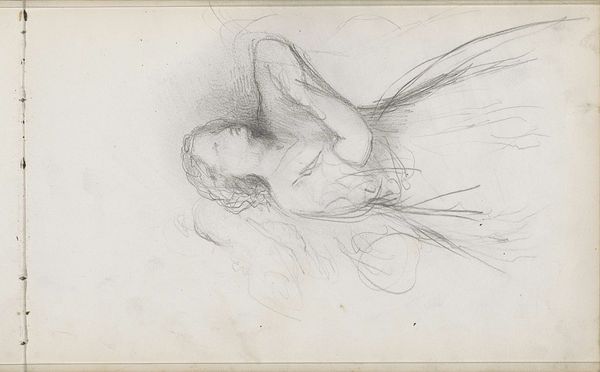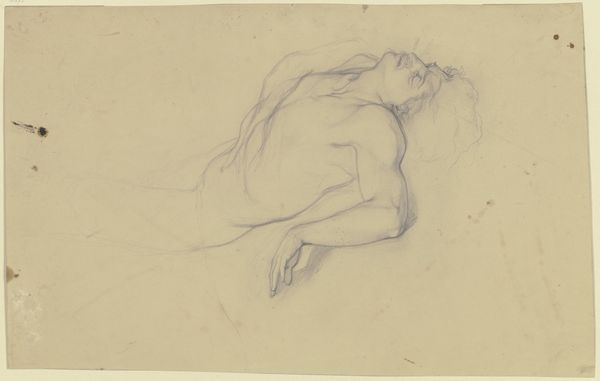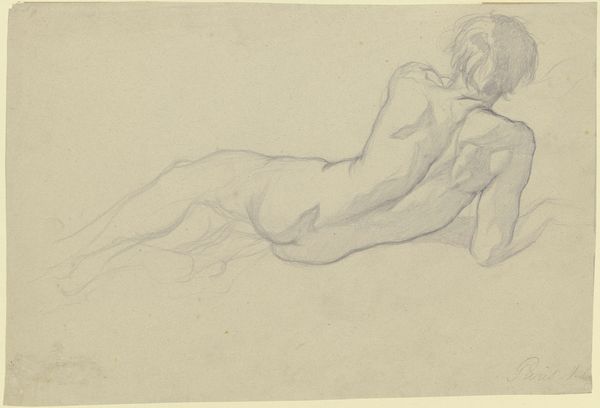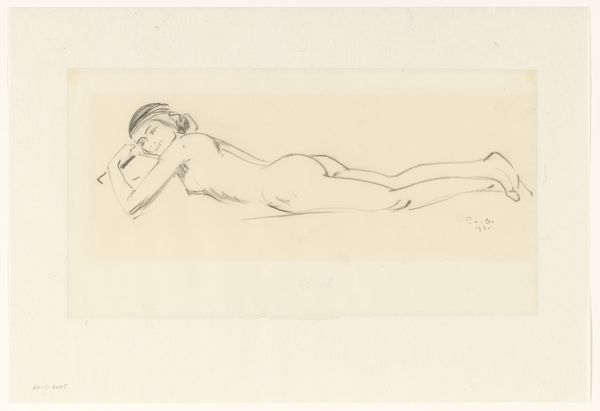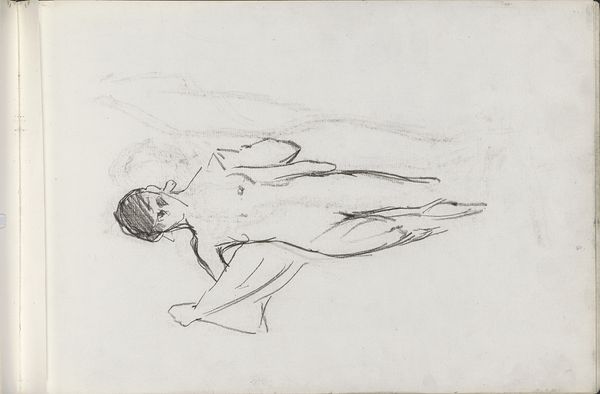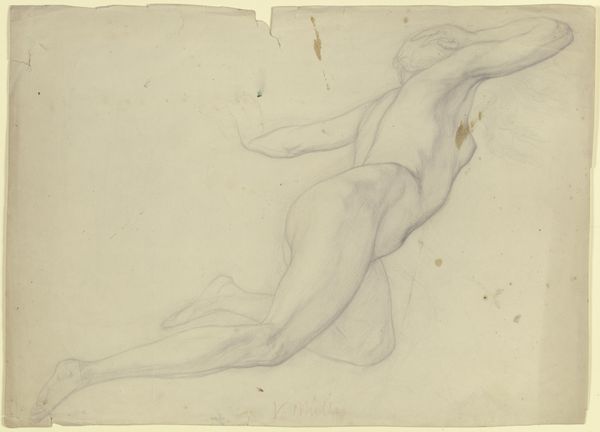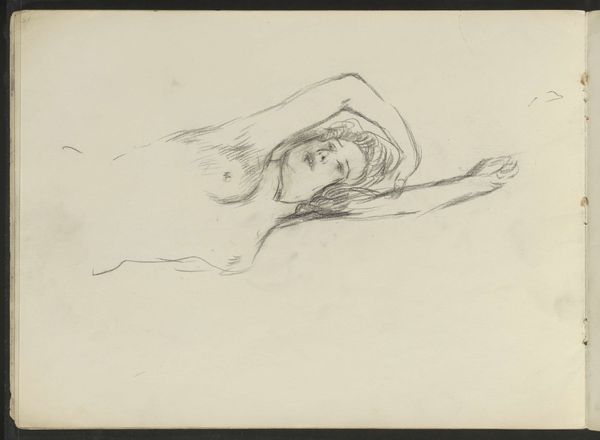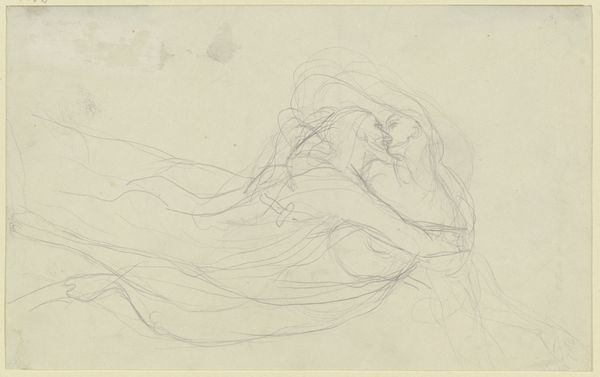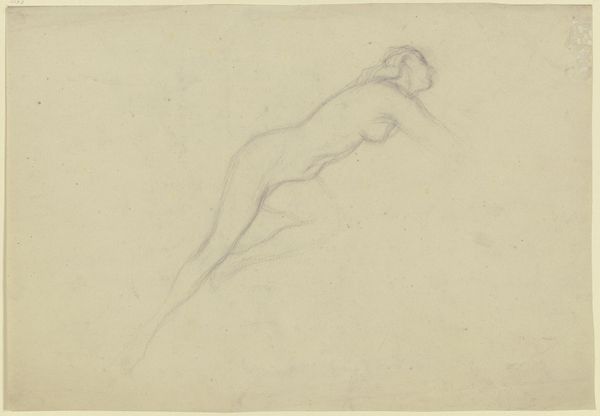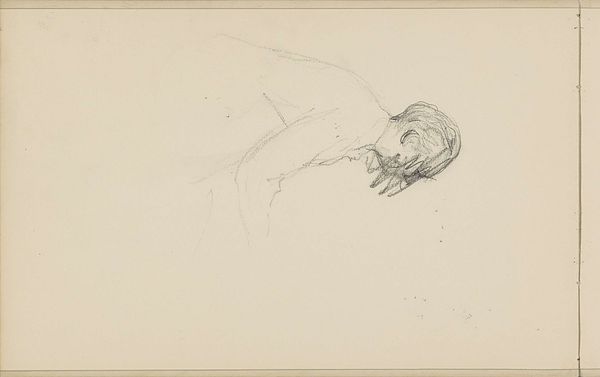
Dimensions: height 267 mm, width 417 mm
Copyright: Rijks Museum: Open Domain
Theodore Roussel made this sketch of a reclining nude woman in graphite. Roussel, though French by birth, spent much of his career working in London, amidst the aesthetic movement. This work speaks to the changing social status of art at the end of the 19th century. Like Whistler, Roussel was interested in the idea of ‘art for art’s sake.’ This was a radical idea at a time when most people thought art had to have a social function or a moral purpose. Whistler and Roussel wanted to liberate art from these old-fashioned expectations. This is why Roussel presents us with such an intimate, personal scene of a woman reclining on a bed. It has no obvious purpose, other than the pleasure we get from viewing it. To understand Roussel's art, one needs to look at the history of exhibition and collecting practices in England and France, found in archives and period journals. Only then can we truly appreciate the social and institutional context that shaped it.
Comments
No comments
Be the first to comment and join the conversation on the ultimate creative platform.
